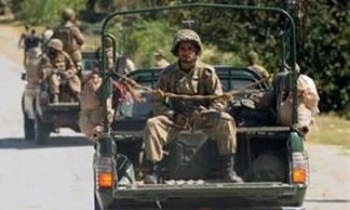WHAT is black, white and read all over? goes the old joke. The answer might once have been a plain old newspaper, but try telling that to the staff of the Financial Times.
Those reporting for work at the pink ‘un today are coming to terms with the launch of the UK’s first completely integrated newsroom.
From now on all the material that appears on ft.com, email news alerts, blogs, podcasts and all other platforms is being produced by the same people who turn out the main paper.
This is a jaw-dropping departure from how things have previously operated at the FT. Similar changes are also in the offing at the Telegraph Group and to a lesser extent at other titles.
Until now newspapers have kept their print and website operations separate. While most journalists and managers have got on with producing a main paper, small dedicated teams have been employed to run the website.
Their tasks have included repurposing printed content to appear online the following day and in some cases producing exclusive material in forms like stories, blogs and podcasts.
Such Chinese walls have now come down at the FT, following much shifting of desks and filing cabinets over the past few days.
“The concept is that we move to a much greater degree of integration between print and online,” says executive editor Hugh Carnegy.
He explains there will now be single commissions for stories to appear on both platforms for the first time. The 7.30am conference for ft.com is now the early conference for the whole paper.
Instead of just taking decisions for the website, the commissions decided at that time will now feed into the main 10.30 editorial conference.
Wherever relevant, each story will appear in regularly updated versions on ft.com throughout the day before being published in the following day’s paper.
This will end several confusing anomalies that have grown up around having two systems at the paper. Reporting teams will no longer have to juggle separate commissions from print and web editors, and there will not be separate teams working on the same story.
There will, meanwhile, be a new interactive team with chief responsibility for more specialised jobs like pod casting and its video equivalent, vodcasting.
All content will be sub-edited by the same people for the first time, which has seen the production teams reorganised into smaller numbers of centralised groups. This group has borne the brunt of the approximately 50 redundancies that have taken place in the run-up to today’s move.
FT staff are in the midst of a major training programme to cope with the new multimedia demands. This is both about teaching them to use the computer system to produce stories in different formats and giving them new skills like using video cameras and creating and editing podcasts.
Carnegy believes this will result in most FT staff regularly contributing to new platforms by this time next year, although the tortoises will not be dying out overnight.
“All journalists won’t suddenly be sitting in front of webcams or chirping away on podcasts. You will see more journalists appearing online, in video and in blogs, but we will not be jumping into it. What’s important is to have the structure in place that allows these things to develop,” he says.
The Telegraph Group is also in the throes of such changes. Overseen by editorial managing director Will Lewis, the sport and business departments have already moved to the new integrated newsroom at London’s Victoria and the rest will follow over the next few weeks.
This will see a total of 133 jobs disappear, including 54 in editorial.
Journalists from the Daily and Sunday Telegraphs alike will be based in the one room at Victoria. There will be a central “news hub” with editors sitting in the middle, orbited by staff from the various departments.
Alongside section heads will be ‘product’ heads to oversee the same sorts of things as the FT’s interactive team.
These will include Telegraph PM, which is the shortened PDF version of the following day’s paper that has recently became freely available from 4pm each day.
It includes stories underpinned by clickable podcasts and vodcasts that draw on the content deal that the group signed with ITN last month. At the same time, there will be a steady increase in the numbers of exclusive web stories, podcasts and blogs that appear online.
“Integration is about the commissioning of content,” says Edward Roussel, Telegraph group digital director. “When you are planning a big event like The Ashes, you are not only thinking about how to tell the story in a newspaper but in other ways too.
“So when we send (cricket writer) Simon Hughes to Australia, he will also be doing content over audio and video and might have a blog for exchanging views with readers. It’s about the heads of department being mindful that there is more than one ways to tell a story.”
Uniquely, the Telegraph also plans to provide five ‘touch points’ for people to get news in accordance with their demands throughout the day.
In the morning it believes that readers want news in text form, either in print, online or via mobile e-alerts. They then want video news at lunchtime; audio news in the afternoon; news they can print out from Telegraph PM for the commute home; and discussion through community sites in the evenings.
This has drawn criticism from some quarters for overlooking the importance of rolling news. For instance G24, which is The Guardian’s equivalent of Telegraph PM, updates constantly.
Roussel rejects this. “If you want rolling news you just look at our website. Telegraph PM is intended to be something of high quality that’s produced once a day that gives you the critical news of the day.”
Either way, other news groups are moving a bit more cautiously with integration. The Times and The Guardian are still pursuing two-speed newsrooms, and in Scotland the internet is only just starting to become a priority.
Newsquest (Herald & Times), which owns the Sunday Herald, is looking at building rolling news and other facilities into its websites. The early moves include a recently-launched blogging site Sunday Herald Talk.
Meanwhile, The Scotsman Publications is part of wider integration plans at owners Johnston Press. Johnston has been conducting trials at its Preston title, the Lancashire Evening Post, which does not go as far as the FT but has seen web coverage become a much higher priority at news conference and journalists being trained in things like blogging and podcasting.
The Edinbugh-based publisher is now preparing to roll it out across the group. One reason why Mike Gilson was made editor of The Scotsman last month was that he chairs Johnston’s digital publishing working party.
Scotsman.com editor Stewart Kirkpatrick believes this will see rolling news and things like podcasts becoming far more prevalent over the next couple of years.
But what he will not specify is the proportion of journalists that it will involve, since that depends on decisions still to be taken about training and investment.
He says: “The vision for us and other newspapers is that over the next couple of years, story filing for the web will just become part of the reporting shift.”
It therefore remains unclear how far other papers will go towards following the FT and Telegraph. Everyone seems to realise that they have to take the internet more seriously, but many will still be watching the pioneers to see if they want to go that far themselves.









